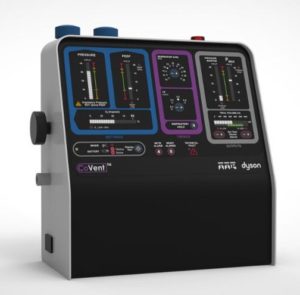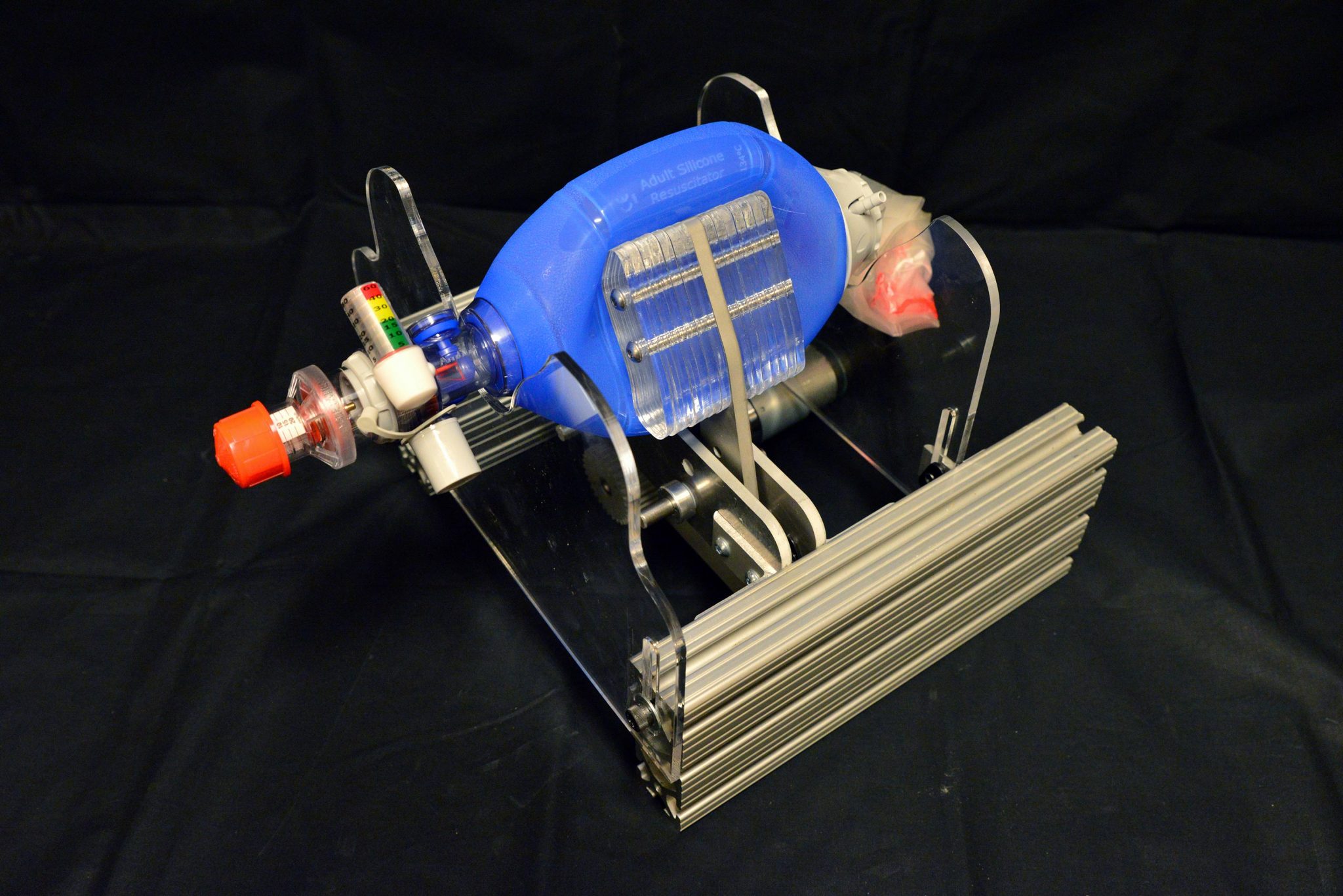It is very clear in current situation; a shortage of ventilators would put lives at risk especially for patients infected with COVID-19 at critical stage. As today, 30 March 2020, global numbers of cases reported of this pandemic COVID-19 are 721,562, while death cases are 33,965 and recovered cases are 151,128 [1]. In Malaysia, the total number of cases reported by Director-General of Health Malaysia are 2,470 cases [2]. From this total number 35 and 388 were death and recovered cases, respectively. Hospitals around the globe are trying to equip with more ventilators as the numbers of patients infected coronavirus keep increasing.
Without ventilators, patients infected with coronavirus which have chances to survive the infection will die. A ventilator is basically a machine that mechanically operated used to aid patients with severe respiratory conditions that impact the lungs, including pneumonia. In simple way, a failure lung due to disease has caused a ventilator to take over the body’s breathing process (when they no longer can on their own). During this period, patient has longer time to fight off the infection and recover. However, these machines can cost up to $30,000 (RM 130,000.00) each.
We might ask, how ventilator could assist the patients? Once the virus enters the lungs, it causes damage to the respiratory system. The immune system directly response this situation and causes blood vessels to expand so that more immune cells enter to fight the virus. What will happen after these? Fluid fills the lungs and cause patients harder to breathe which significantly affecting the oxygen levels to drop. Therefore, to relieve this condition, a machine ventilator is employed to drive more air into the lungs so that levels of oxygen will be increased. The ventilator equips with a humidifier, which used to control heat and moisture to the medical air, so it fits the patient’s body temperature. At this moment, patients are provided prescription to relax the respiratory muscles as a result their breathing can be totally regulated by the machine.
Now with current situation with the rapidly growth of coronavirus cases, the shortage of ventilator is totally a crisis. How many ventilators required by the hospitals? As reported by BBC [3], The NHS (The National Health Service (NHS) is the publicly funded healthcare system in England) is reported to have just 8,175 ventilators – and they immediately looking for more to come in. The UK government has said that they require up to 30,000 ventilators at the moment of peak situation of this pandemic COVID-19.
The technology firm from British entrepreneur Sir James Dyson who is the founder of Dyson company has responded and confirmed to an initial order of 10,000 units from the U.K. government has been placed [4]. The newly designed ventilators from Dyson name as The CoVent was designed and developed from scratch, which has been tested on humans and is “ready to go”.
In order to provide enough numbers of ventilators to hospitals, Gtech company, has designed and built a prototype without a power source which be able to operate completely off the hospital oxygen supply.
Another Urbicum company from Poland, a manufacturer of 3D printers, has developed and produced these life-saving devices cheaply in short time using 3D -printing technique to respond to the shortage of ventilators [5].
Universities such as Oxford University, has come out with the new innovation of ventilator with an innovative design for a low-cost version. This cheaper ‘off-the-shelf’ version may shortly be able to lift the number of shortage ventilator.
Massachusetts Institute of Technology (MIT), has propose a free plan online for an emergency ventilator that can be built for $100 called as MIT E-Vent (for emergency ventilator) [6]. They have been working to execute a safe, an economical alternative for emergency purposes, which possibly will be built quickly around the world. It is a hand-operated plastic pouch known as a bag-valve resuscitator, or Ambu bag, which already available largely in hospitals.
People linked to the universities and company indicated that we could save many lives in the growth of the pandemic COVID-19. This meaningful project needs aid and feedback from the frontlines such as doctors, medics, and nurses so that designers and engineers could precisely stipulate the machine in this emergency.
DR. AMIR PUTRA BIN MD SAAD
Senior Lecturer
Applied Mechanics and Design
School of Mechanical Engineering
Faculty of Engineering
Research Fellow
Medical Devices and Technology Centre (MEDiTEC)
Institute of Human Centered Engineering (iHumEn)
Universiti Teknologi Malaysia (UTM)
References:
- https://www.worldometers.info/coronavirus/
- http://www.moh.gov.my/index.php/pages/view/2019-ncov-wuhan
- https://www.bbc.com/news/health-52036948
- https://www.forbes.com/sites/daviddawkins/2020/03/26/billionaire-james-dyson-confirms-initial-order-of-10000-ventilators-will-made-in-britain-at-raf-hullavington/#5a37d4ef1660
- https://polandin.com/47241192/poles-construct-first-3d-printed-lifesaving-ventilator
- https://scitechdaily.com/mit-posts-free-plans-online-for-an-emergency-ventilator-that-can-be-built-for-100/





hydroxychloroquine sulfate 200mg
hydroxychloroquine where to buy is plaquenil an immunosuppressant long term effects of plaquenil
modafinil schedule modafinil online